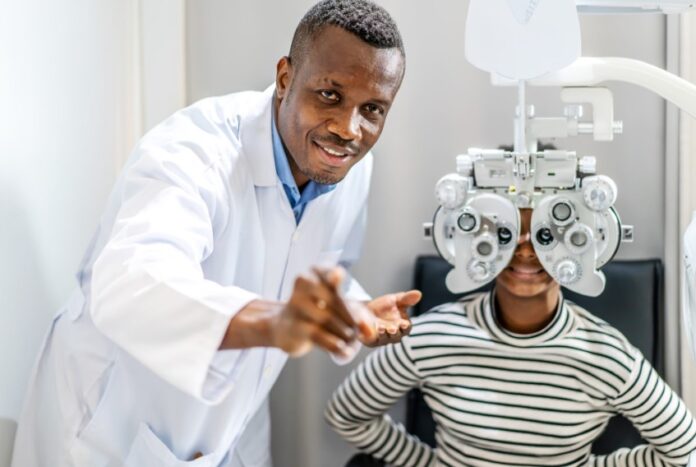According to a study, it is predicted that half of the global population will have myopia by 2050.
Myopia most often develops during childhood and may worsen until the teenage years. You may wonder what causes nearsightedness or myopia and how to prevent it with your child.
Certainly, genetics plays a significant factor, so it’s important to know if your child’s parents, grandparents, or other relatives are myopic. Beyond that, though, exposure to computer screens, poor vision care habits, and environmental factors may contribute to it.
Learn more about the causes of nearsightedness and provide your child with the best treatment options.
What Causes Myopia?
There are a number of different things that can cause someone to become nearsighted, or myopic. This can include genetics, working or studying too close to objects, and prolonged use of digital devices.
Prolonged Use of Digital Devices
When you strain your eyes to focus on something far away, the muscles in your eyes work harder and can become tired. This can lead to the elongation of your eyeball, which is why myopia typically corrects itself when you take breaks from looking at screens.
Genetics
Studies have shown that myopia tends to run in families and that children of myopic parents are more likely to develop the condition themselves. This indicates that there is a strong genetic predisposition to myopia, which likely interacts with other environmental factors to ultimately result in the development of the condition.
Working or Studying Too Close to Objects
This is because when you focus on something close up, your eye muscles have to work harder and this can lead to them becoming tired and strained. Over time, this can cause the eyeball to become elongated, which results in myopia.
The Treatment Options
One nearsighted treatment is to wear corrective lenses, either in the form of eyeglasses or contact lenses. Another option is to undergo refractive surgery to correct the shape of the eye.
Glasses or Contact Lenses
Glasses correct the way that light enters the eye so that the person wearing them can see objects clearly, both close up and far away. Contact lenses also correct the way that light enters the eye, but they are worn directly on the eye. People who have myopia can choose to wear glasses or contact lenses, or they can choose to not wear any corrective lenses at all.
Lasik Surgery
Lasik surgery can treat myopia by reshaping the cornea so that light entering the eye is properly focused onto the retina. This can correct vision problems caused by an irregular cornea. Lasik is a relatively quick and painless procedure that has a high success rate.
Visual Therapy
Visual therapy involves exercises and activities that help to improve the functioning of the visual system. This can help to reduce the symptoms of myopia and improve vision.
Understanding the Causes of Nearsightedness
If you are having difficulty seeing far away, you may be suffering from myopia or nearsightedness. There are many possible causes of nearsightedness including genetics, excessive screen time, and working too close to objects.
However, there are also many treatment options available, including glasses, contact lenses, and surgery. If you think you may be suffering from myopia, be sure to talk to your doctor to discuss your nearsightedness treatments.
If you find this article helpful, why not check out our blog for other useful articles about eye problems and treatment for them?










